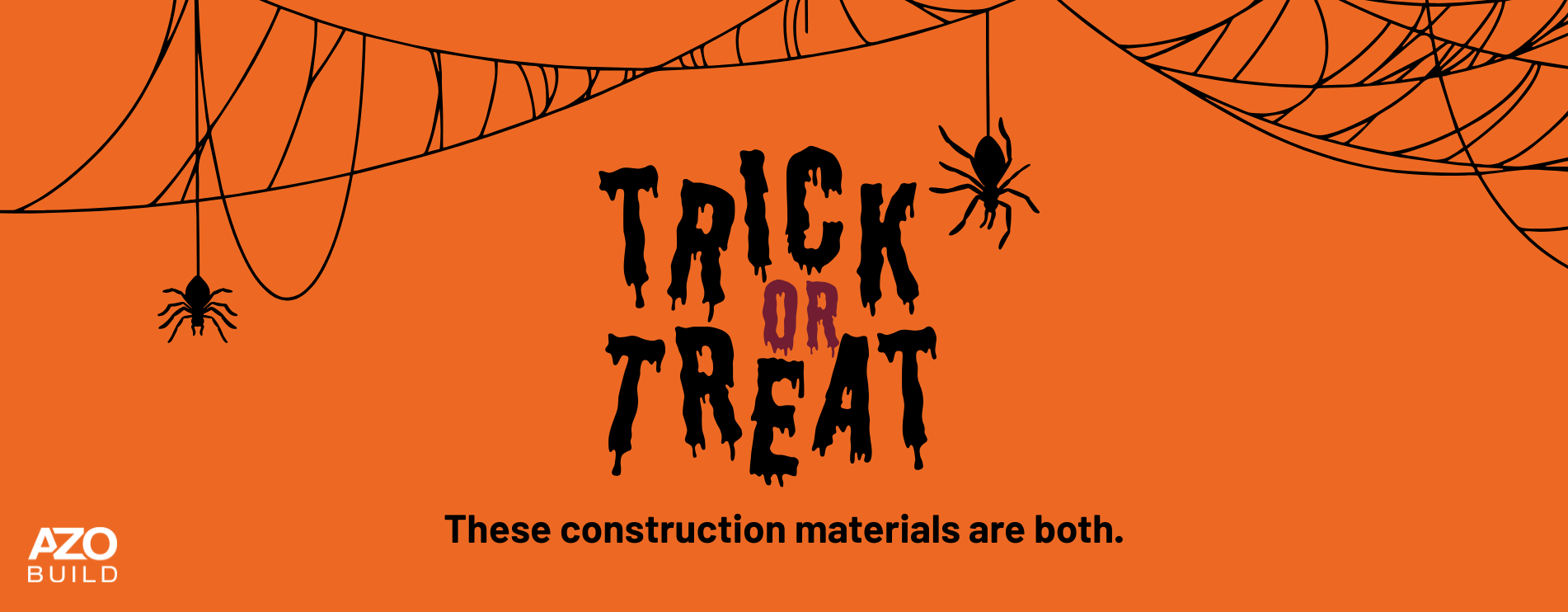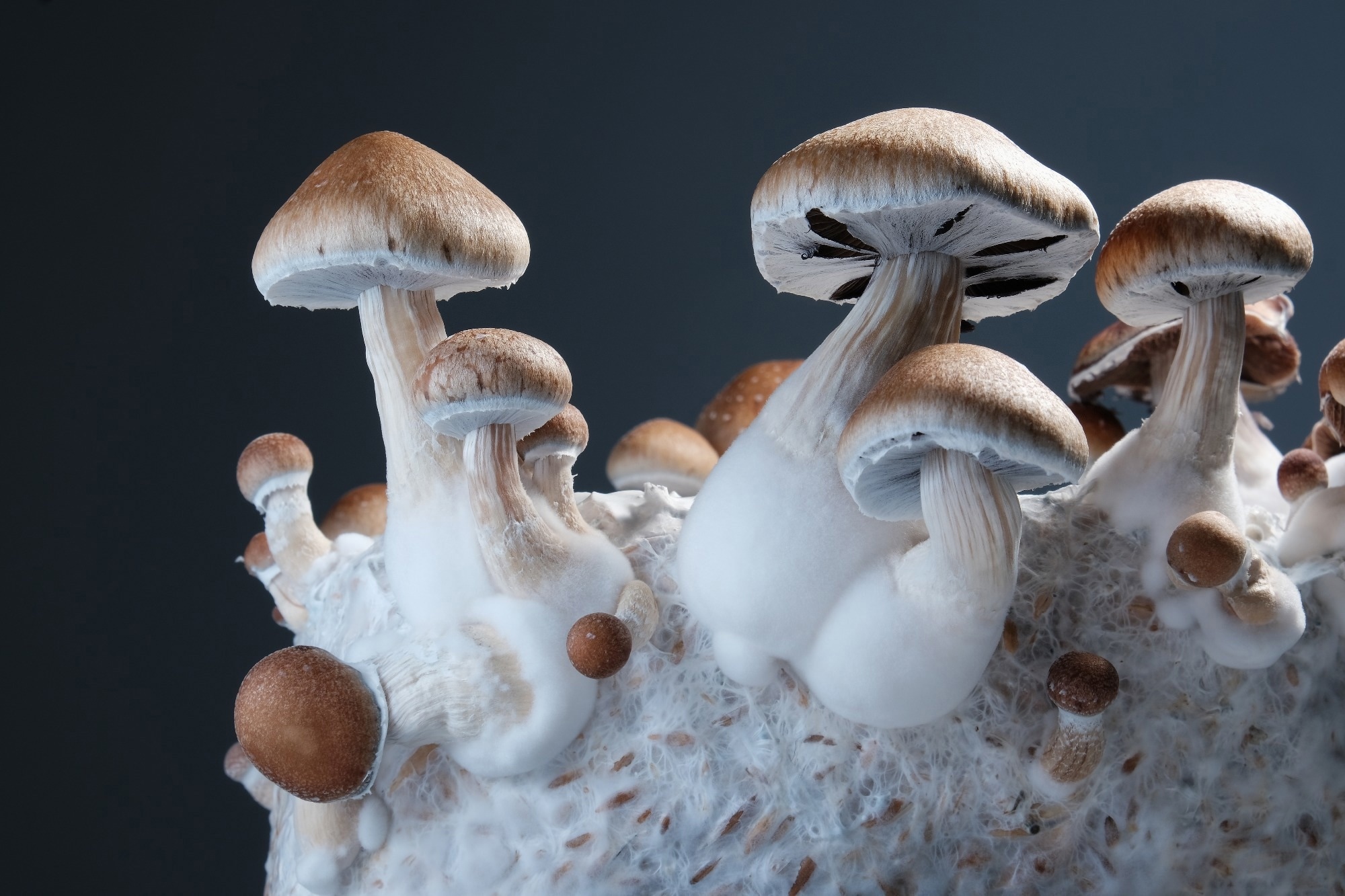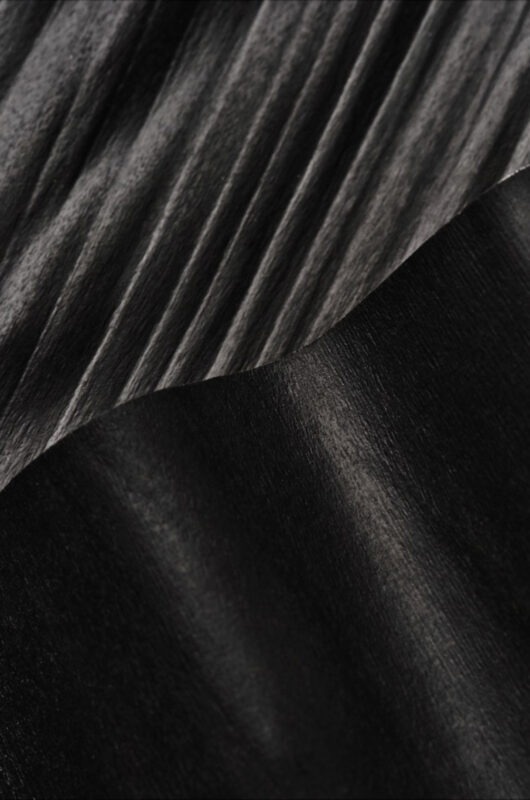
As Halloween approaches, it feels fitting to explore the stranger side of construction - materials that defy convention and seem almost otherworldly in their origins. From fungi-grown bricks to concrete made for Mars, modern material science is conjuring up innovations that blur the line between science fiction and structural engineering.
Want all the "spooky" details? Grab your free PDF here!
1. Mycelium (Fungal Material)
Mycelium, a material cultivated from fungal networks, blurs the line between the organic and the architectural. Though its origins might sound otherworldly, its sustainability credentials are entirely practical. Mycelium is a bio-based material derived from the root-like network of fungi, produced by cultivating it in a nutrient-rich substrate, often sourced from agricultural waste. Over time, the fungal hyphae bond with the substrate, forming a lightweight composite suitable for construction elements such as bricks and panels.

Image Credit: Cannabis_Pic/Shutterstock.com
Mycelium composites are non-toxic and require less energy to produce compared to conventional materials, making them a resource-efficient choice. They are biodegradable and compostable, contributing to circular economy practices, and provide natural fire resistance along with effective thermal and acoustic insulation properties.1,2
Mycelium-based materials have a wide range of applications. They can be used to create wall panels, insulation, acoustic tiles, and even load-bearing bricks. These materials are valuable in situations where low density and insulation are more important than raw compressive strength. Recent research has actually shown the potential to integrate mycelium with knitted textile forms, leading to flexible and multifunctional elements that can be grown into complex geometries. Such biohybrid solutions allow for rapid fabrication and the creation of bespoke structures with low environmental impact.?1
Yet, despite all their good, mycelium composites aren’t without their challenges. They don’t yet offer the kind of compressive or tensile strength needed for heavy-duty, structural roles, and their long-term durability, especially in tough environments, is still being tested. Scaling up production while keeping performance consistent is another hurdle researchers and builders are working to overcome. Still, mycelium has real potential as a sustainable, low-impact material. It’s already finding a place in temporary buildings, interior design, and even architectural art; areas where environmental impact matters just as much as function or form.
2. Woodoo (Augmented Wood)
Few materials bridge nature and technology as seamlessly as Woodoo - a form of bioengineered timber that feels almost enchanted in its transformation.
Developed by the French company of the same name, Woodoo begins as ordinary wood before undergoing a process that removes lignin and replaces it with specialized polymers. The result is a translucent, touch-sensitive material that retains wood’s warmth while gaining the durability of glass or concrete. By combining natural aesthetics with advanced functionality, Woodoo reimagines what timber can be in modern architecture. 3,4

Image Credit: Woodoo
Key applications include building panels, interior surfaces, commercial displays, and touch-sensitive interfaces for smart environments. The material’s compatibility with modern electronics enables its use in connected surfaces for offices, airports, conference halls, and even the automotive sector, creating elegant yet robust interactive displays. Production of Woodoo is resource-efficient, often utilizing fast-growing, low-grade species sourced from sustainably managed forests within a regional supply chain.?3
Despite these strengths, limitations do exist. The technology is relatively new, and large-scale deployment faces cost and manufacturing scalability questions. Optical properties are also anticipated to degrade over time under UV exposure, and biopolymer-impregnated wood recycling is more complex than pure timber recycling. Still, Woodoo’s clear environmental and functional advantages are making it an enduring feature in high-tech, sustainable construction.?3,4
3. CABKOMA (Hydrocarbon Threads)
CABKOMA is a thermoplastic carbon fiber composite developed by Komatsu Matere Co., Ltd., offering a fresh take on materials used for construction reinforcement, especially in seismic retrofitting. At its core, CABKOMA combines high-strength carbon fibers with an outer layer of inorganic fibers, all bound together by a thermoplastic resin. One of its most striking features is how lightweight it is: a 160-meter roll weighs just 14 kilograms, making it dramatically lighter than traditional steel reinforcements of similar strength.5,6
The material comes in strand rods and sheets, and brings a host of benefits to the table. It has excellent tensile strength relative to its weight, resists corrosion, and holds up well across temperature changes. Because it's made with thermoplastic resin, CABKOMA can be reheated and reshaped after installation without losing its structural integrity. That flexibility makes it ideal for projects where weight, portability, or corrosion resistance are key, such as seismic retrofitting of heritage buildings, tension structures, or more experimental architectural designs. One standout example is architect Kengo Kuma’s fa-bo laboratory, which uses CABKOMA in an eye-catching and functional way.6,7
Looking ahead, CABKOMA has a lot to offer future-focused construction. Its lighter weight cuts down on labor and transport costs, it doesn't rust, and it allows for easier repairs thanks to its reworkable resin matrix. There's even potential for partial recyclability. However, it’s not without drawbacks. The upfront cost is higher than traditional steel, and like many thermoplastic composites, it may face long-term durability issues such as UV degradation or creep under constant stress, particularly in harsh environmental conditions.5-7
4. Translucent Aluminum
Translucent aluminum, officially known as aluminum oxynitride or ALON, is a material that combines the toughness of metal with the clarity of glass. It’s a ceramic with a cubic spinel crystal structure, giving it impressive optical transparency across both visible and infrared wavelengths, along with high hardness, thermal stability, and abrasion resistance. What really sets ALONapart is its ability to offer transparent protection, outperforming standard glass and polymers in both strength and durability. It’s also lighter than bulletproof glass, making it an attractive option for military uses like armored windows and sensor covers.8,9
Thanks to its resistance to impact, temperature extremes, and chemical corrosion, ALON is now being considered for high-performance applications well beyond defense. It’s already being used in infrared sensor windows, armored vision blocks, and even architectural facades that offer smart thermal and light control. Ongoing research is working to make it even tougher and more scalable, with innovations in sintering, doping, and particle sizing helping to push the material forward.8,9
That said, translucent aluminum comes with some real limitations, mostly around cost and production. It takes extremely high temperatures and controlled environments to manufacture, and polishing it to achieve optical clarity is a slow, equipment-heavy process. Producing large, defect-free panels remains a technical challenge. These factors make ALON expensive and difficult to scale, which currently limits its use in mainstream construction, where budget and ease of fabrication are critical.8,9
5. Martian Concrete
Martian concrete is being designed with one goal in mind: making construction possible on Mars (or the Moon) using the materials already there. Traditional Portland cement is not an option in space as it requires too much water, which is scarce and expensive to transport, and it depends on raw materials that are not readily available on other planets.10,11

Image Credit: Alones/Shutterstock.com
To address this, engineers have been developing alternatives tailored to the unique conditions of extraterrestrial environments. One promising solution is sulfur-based concrete, which uses locally sourced sulfur to bind crushed Martian soil (regolith), completely eliminating the need for water. The process is relatively straightforward: melt the sulfur, mix it with regolith, and cast it into shape. This mix hardens quickly and even offers some radiation protection, which is a crucial feature for life on Mars. However, it isn’t perfect; sulfur concrete can be vulnerable to thermal cycling and chemical instability, which are common in the Martian climate.10,11
Other approaches use geopolymers or polymer-based binders to activate regolith, resulting in concrete alternatives with impressive strength. These versions are often compatible with 3D printing and can incorporate locally sourced aggregates. Some even explore the use of microwave or laser sintering to fuse soil particles into solid building blocks - again, with no water required. That makes them both resource-efficient and highly suited for space construction.10,11
Despite major strides, big challenges remain. Variability in Martian soil composition can make it tough to ensure consistent quality. There’s also the need to prove long-term durability in extreme conditions and figure out how to scale production for full-sized habitats or infrastructure. Still, the work being done today to create Martian concrete is inspiring new ideas for sustainable, water-free construction methods here on Earth.10,11
Conclusion
The most remarkable innovations aren’t always loud or obvious. Sometimes, they take shape quietly, emerging from the experimental, the overlooked, or even the extraterrestrial.
These developments mark a subtle yet meaningful shift in mindset. Building has moved on from simply designing for strength or solidity; instead, it's becoming more about adaptability, sustainability, and the material's relationship with its surroundings. Mycelium can grow into form instead of being forged. Translucent metals protect while letting light through. Concrete can be made without water - even on another planet. These materials invite us to rethink permanence and ask whether true progress lies not just in durability, but in responsiveness.
References and Further Reading
- Gillham, A. B. (2023). Scientists knit futuristic eco-building designs using fungal networks. Frontiers Science News. https://www.frontiersin.org/news/2023/07/14/scientists-knit-futuristic-eco-building-designs-using-fungal-networks
- Alemu, D. et al. (2022). Mycelium-Based Composite: The Future Sustainable Biomaterial. International Journal of Biomaterials, 2022(1), 8401528. DOI:10.1155/2022/8401528. https://onlinelibrary.wiley.com/doi/10.1155/2022/8401528
- Woodoo Augmented Wood - transforming wood into construction material strong as concrete and translucent as amber. (2020). European Commission. https://cordis.europa.eu/article/id/429178-translucent-touch-sensitive-wood-biomaterials-revolutionising-wood-in-construction-and-beyond
- Li, Y. et al. (2017). Transparent wood for functional and structural applications. Philosophical Transactions of the Royal Society A: Mathematical, Physical and Engineering Sciences, 376(2112), 20170182. DOI:10.1098/rsta.2017.0182. https://royalsocietypublishing.org/doi/10.1098/rsta.2017.0182
- Ikebata, S. (2018). Innovative New Construction Material. (2018). Japan Science & Technology Agency. https://www.jst.go.jp/EN/achievements/research/shoichi_ikebata-kiyoshi_uzawa2018.html
- CABKOMA: Lightweight, Strong and Corrosion-free. Komatsu Matere. https://www.komatsumatere.co.jp/cabkoma/en/
- Franta, A. (2022). Carbon fiber reinforced polymer and tensegrity structures in search of model architectural and engineering solutions. Technical Transactions. https://repozytorium.biblos.pk.edu.pl/redo/resources/46436/file/resourceFiles/FrantaA_CarbonFiber.pdf
- WU, J. et al. (2023). Recent progress and challenges of transparent ALON ceramics. Transactions of Nonferrous Metals Society of China, 33(3), 653–667. DOI:10.1016/s1003-6326(22)66136-3. https://www.sciencedirect.com/science/article/pii/S1003632622661363
- Kamali, S. et al. (2021). Highly transparent ALON fabricated via SPS synthesized by Al2O3/C core–shell starting powder and CRN method. International Journal of Applied Ceramic Technology, 18(3), 724-738. DOI:10.1111/ijac.13694. https://ceramics.onlinelibrary.wiley.com/doi/abs/10.1111/ijac.13694
- Hu, Z. et al. (2022). Research progress on lunar and Martian concrete. Construction and Building Materials, 343, 128117. DOI:10.1016/j.conbuildmat.2022.128117. https://www.sciencedirect.com/science/article/abs/pii/S0950061822017822
- Troemner, M. et al. (2021). Marscrete: A Martian Concrete for Additive Construction Applications Utilizing In Situ Resources. ASCE Earth and Space. DOI:10.1061/9780784483374.074. https://ascelibrary.org/doi/10.1061/9780784483374.074
Disclaimer: The views expressed here are those of the author expressed in their private capacity and do not necessarily represent the views of AZoM.com Limited T/A AZoNetwork the owner and operator of this website. This disclaimer forms part of the Terms and conditions of use of this website.